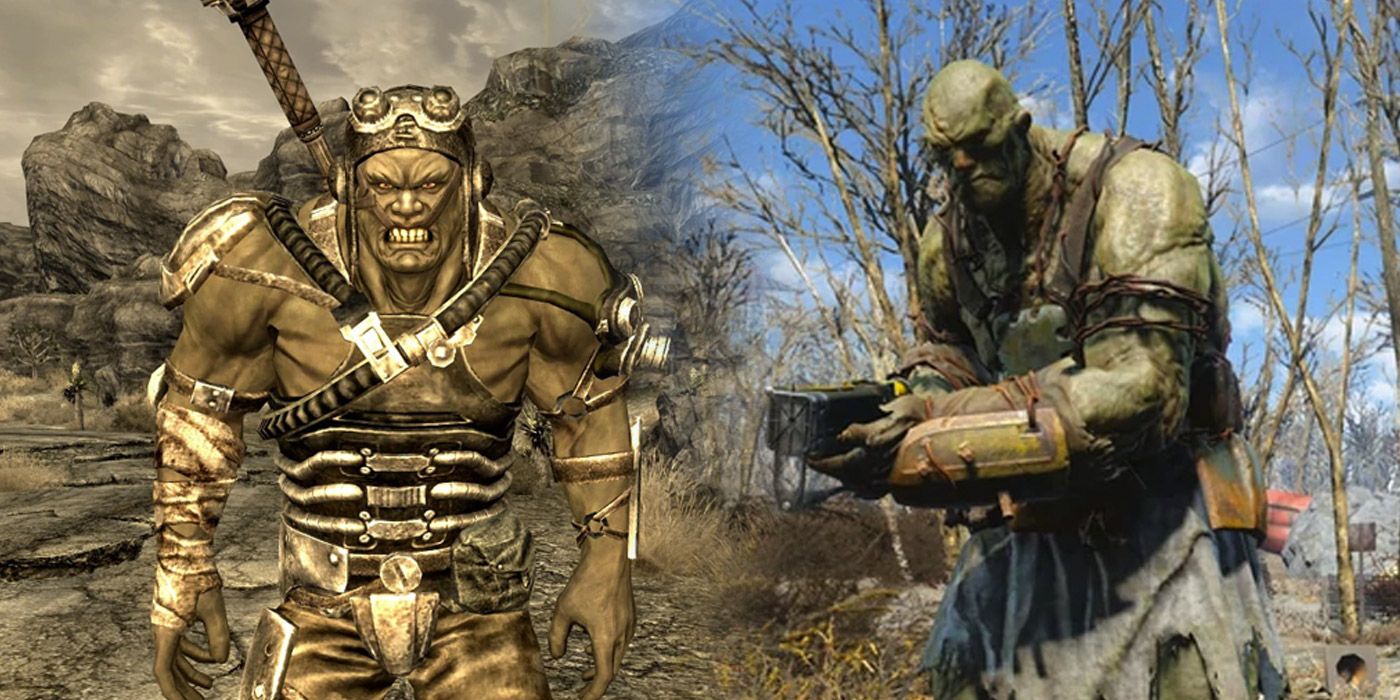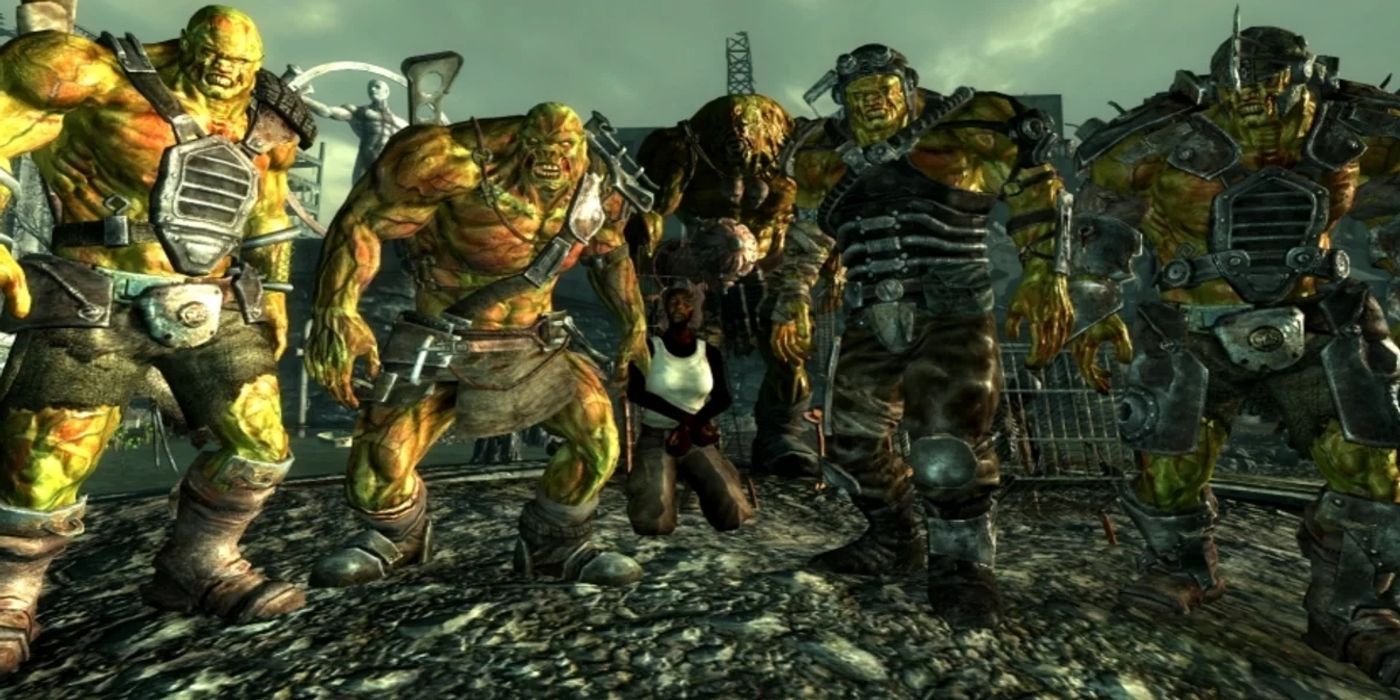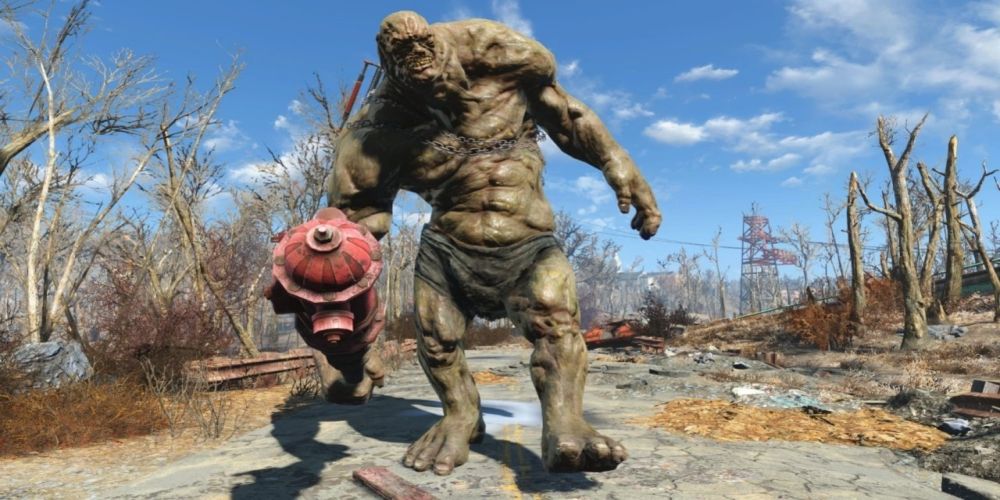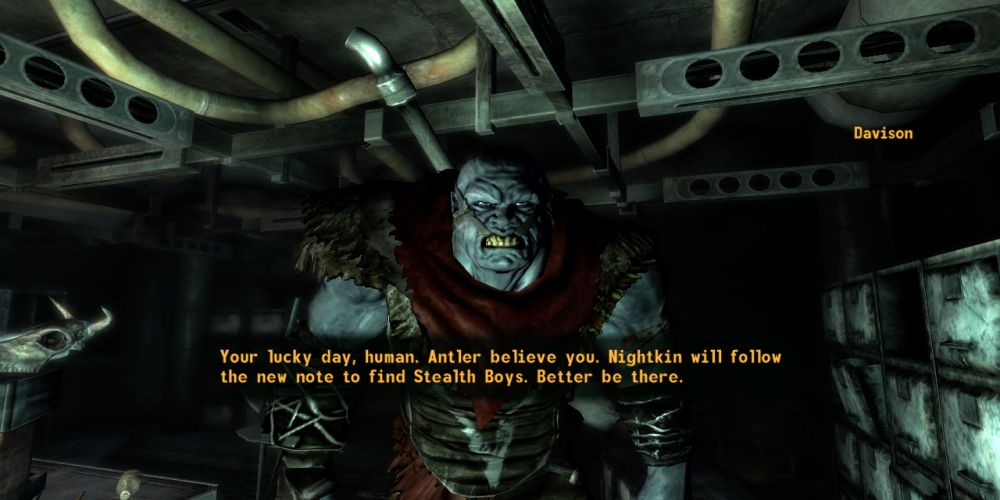Super Mutant have appeared in every Fallout game to date, although to differing degrees. Some games feature a lot of them, some feature much less, and others focus on one specific type of Super Mutant more than the rest. Biologically, there's differences in Fallout Super Mutants based on where they made, the exact virus that made them, how long they've been exposed to it and other influences, how much time they've spent in the real world, and more.
At the end of the day, outside of the named intelligent Super Mutants in Fallout, many may not have thought too much about them. However, there's a rich lore in the Super Mutant's formation, growth, history, and more.
Super Mutant
Appearing in the original game as a unique mutant enemy led by the Master, super mutants have since become more and more varied. In general, a Super Mutant is a hulking humanoid (compared to regular humans, though not all are of equal size) with enhanced strength, physical capabilities, disease and radiation resistances, and more. These creatures were created due to exposure to the Forced Evolutionary Virus, which itself has come in a variety of strains and implementations in the past. Used before and after Fallout's Great War in multiple ways, it began as a Super Soldier program of sorts before becoming the full-blown source of Super Mutants. Strains and experiments resulting in their creation include the following:
- FEV-II (Mariposa) - The standard strain responsible for the initial Super Mutant breakouts.
- EEP Derivative - This inferior strain from Vault 87 had a nasty side effect: people infected with it did not stop growing, with reports of some reaching the size of small buildings.
- Institute Strains - Super Mutants created by the Institute tend to have more average intelligence than other versions.
- Huntersville Strain - This unique strain infected many before The Great War and has many militaries with other strains.
A few more experiments and strains exist in conjunction with the Super Mutants, but those players encounter in any Fallout game will typically have been created by these. While these strands themselves changed a lot with each experiment, the simplest way to understand a Super Mutant is based on its location. While there are exceptions aplenty, those located in the Western United States tend to be more intelligent and thus more capable of peaceful existence and organization, while Eastern Super Mutants tend to be wild scourges. Eastern Super mutants are usually green (minus those in Appalachia), while Western are more yellow-ish. Fallout 76's Appalachia setting, because of its location and proximity to the aforementioned strains, has the most variability in Super Mutant to Super Mutant.
Super Mutant Behemoths
Super Mutant Behemoths tend to be the oldest, biggest, and strongest Super Mutants out there, and for good reason. Strangely enough, intentionally or otherwise, the EEP Derivative, Institute, and Huntersville strains can lead to a Behemoth, but it tends to be the EEP derivative that stand out in terms of sheer size in Fallout lore. The EEP Derivative is the one most-often associated with a Super Mutant's continued growth, but it does seem as they get bigger, they may undergo more changes.
Behemoths don't technically have a cut-off height, but many tend to be around 13 feet tall. At this size, they will not be capable of intelligent speech (for some reason). A key difference in Behemoths made by Fallout 4's Institute is that there will be specific muscle growth in the right arm and spine, causing these Super Mutants to walk unevenly. Overall, Behemoths are a result of age and strength, and can be hard to defeat enemies in the Fallout games where they specifically appear. Luckily for fans of the long-running series, while every Fallout game has Super Mutants, not every one has Behemoths. Notably, Fallout 1, Fallout 2, and Fallout: New Vegas do not, which may be a reflection in terms of design choice for the individual games (these were not made by Bethesda).
Nightkin
Fallout: New Vegas may not have Super Mutant Behemoths, but it is one of two franchise games to feature Nightkin (the other being Fallout 1). This makes sense, as the Nightkin were the "elite warriors" of The Master's super mutant army and the height of his experiments in the first game. When The Master was defeated, Nightkin broke off into various warbands that ended up wandering the wasteland. Many fell in line with leaders like Tabitha, Marcus, Keene, Attis, and Davison over the years. Each has a different vision for the Nightkin, but as their appearances in the in-game universe would suggest, they number less than other Super Mutants (they were the apex of their creation, after all). Still, many also adhere to some sort of isolationism in relation to humans.
The easiest way to spot a Nightkin in comparison to a regular Super Mutant is their black skin; it stands out in stark contrast to the greens and yellows of other Super Mutants. In general, the Nightkin tend to be more intelligent and articulate than the average Super Mutant, with many considering them the best of all the first-gen Super Mutants. However, over time, it seems they may have weakened in strength due to their use of Stealth Boys. Nightkin have a tendency, biologically or sociologically, to abuse Stealth Boys, resulting in them hating to be seen by others. This also breaks down into a form of schizophrenia for many Nightkin.
The games may note various distinctions among the Super Mutants like Suiciders or Warlords, but these three forms serve the crux of a Super Mutant's life. Some may be violent monsters, while others may be intelligent and want peace. However, as all Fallout fans know, war never ends.
No new Fallout game is known to be in development.




